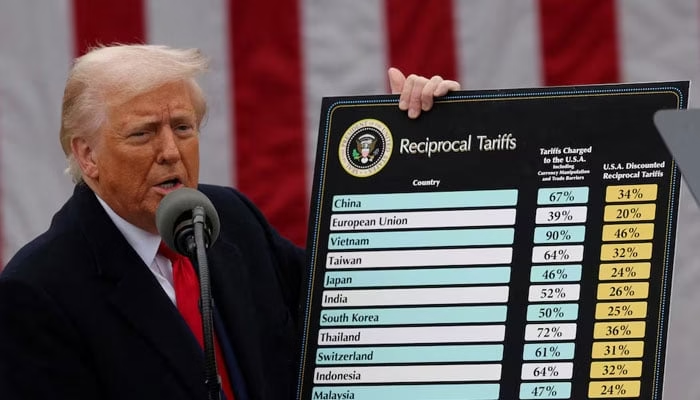The US Supreme Court tariffs case has become one of the most closely watched legal battles in recent years, as the justices examine whether President Donald Trump exceeded his authority by imposing sweeping tariffs under a decades-old emergency powers law. The hearings, marked by sharp questioning from both conservative and liberal justices, could redefine the limits of executive power in matters of trade and foreign affairs.
At the center of the US Supreme Court tariffs case is Trump’s reliance on the International Emergency Economic Powers Act (IEEPA), a 1977 law originally designed for national emergencies involving hostile states or financial threats. Trump used the law to levy tariffs on numerous trading partners, prompting businesses and several US states to challenge the legality of the move. Lower courts previously ruled that Trump’s actions overstepped presidential authority, setting the stage for this high-stakes review.
Justices Question the Scope of Presidential Power
During more than two and a half hours of arguments, several justices pressed the government’s lawyer, Solicitor General D. John Sauer, on whether IEEPA granted the president such broad economic powers. Chief Justice John Roberts directly questioned whether the law allowed a president to impose tariffs—essentially taxes—without explicit congressional approval.
Roberts noted that tariffs are historically within Congress’s domain, calling them “the imposition of taxes on Americans,” and raising the possibility that the “major questions” doctrine could apply. This doctrine, often referenced in recent Supreme Court decisions, requires clear congressional authorization for executive actions with significant political or economic impact. Applying this standard in the US Supreme Court tariffs case could mean that Trump’s sweeping actions lacked sufficient legal basis.
Conversely, some conservative justices emphasized that foreign affairs inherently require broader presidential authority. They suggested that regulating international trade may fall squarely within the executive’s domain, complicating predictions about the final ruling.
Barrett, Jackson, and the Historical Intent of IEEPA
Justice Amy Coney Barrett challenged the administration to provide historical precedent for interpreting the phrase “regulate importation” as granting tariff-imposing powers. Meanwhile, Justice Ketanji Brown Jackson stressed that IEEPA was originally crafted to limit presidential discretion, not expand it.
Their questioning highlighted a central issue in the US Supreme Court tariffs case: whether emergency powers intended for targeted economic sanctions can be stretched to justify a global tariff regime affecting nearly every trading partner.
A Politically Charged Tariff Strategy
Trump has aggressively encouraged the Supreme Court to preserve his tariff program, which he sees as a key tool in negotiating foreign trade agreements. His administration argues that the tariffs are necessary to protect the United States from economic threats, including trade deficits and unfair foreign practices.
Sauer warned the Court that overturning the tariffs could expose the country to “ruthless trade retaliation” and undermine Trump’s leverage in securing trade concessions. The administration also claims that removing the tariffs could unsettle existing agreements and destabilize national security interests.
During arguments, justices noted that the IEEPA-based tariffs generated $89 billion between February and September—further demonstrating the economic scale of the issue. This financial magnitude strengthens the relevance of the US Supreme Court tariffs case, as it directly affects international markets, domestic businesses, and long-term trade policy.
Historical Examples and Conflicting Views
Justice Brett Kavanaugh referenced President Richard Nixon’s use of a predecessor statute to impose worldwide tariffs, suggesting that Trump’s actions might not be as unprecedented as challengers claim. Other justices, however, saw the comparison as limited, arguing that presidential power cannot override Congress’s constitutional responsibilities.
Justice Neil Gorsuch raised concerns about separation of powers, asking what would prevent Congress from delegating excessive authority to the president if the Court accepted such a broad reading of IEEPA. His comments suggested skepticism toward giving the executive unchecked power over foreign commerce.
What’s at Stake in the Final Ruling
The outcome of the US Supreme Court tariffs case holds major consequences for both domestic governance and global economics. If the Court rules against Trump, it could sharply restrict presidential authority over tariff policy and reinforce Congress’s central role in trade regulation. Such a ruling may also invalidate a portion of the tariffs already imposed, creating uncertainty for businesses and trading partners.
On the other hand, if the Court upholds Trump’s interpretation of IEEPA, future presidents—regardless of political party—could wield broad tariff powers without needing congressional approval. This would mark a significant shift in the balance of power, expanding executive authority in an area traditionally dominated by legislative oversight.
The US Supreme Court tariffs case is far more than a legal dispute over import duties. It is a defining moment for the separation of powers, the boundaries of presidential authority, and the future of US trade policy. As the nation awaits the Court’s decision, the implications extend well beyond Washington—reaching global markets, international diplomacy, and the core principles of constitutional governance.



